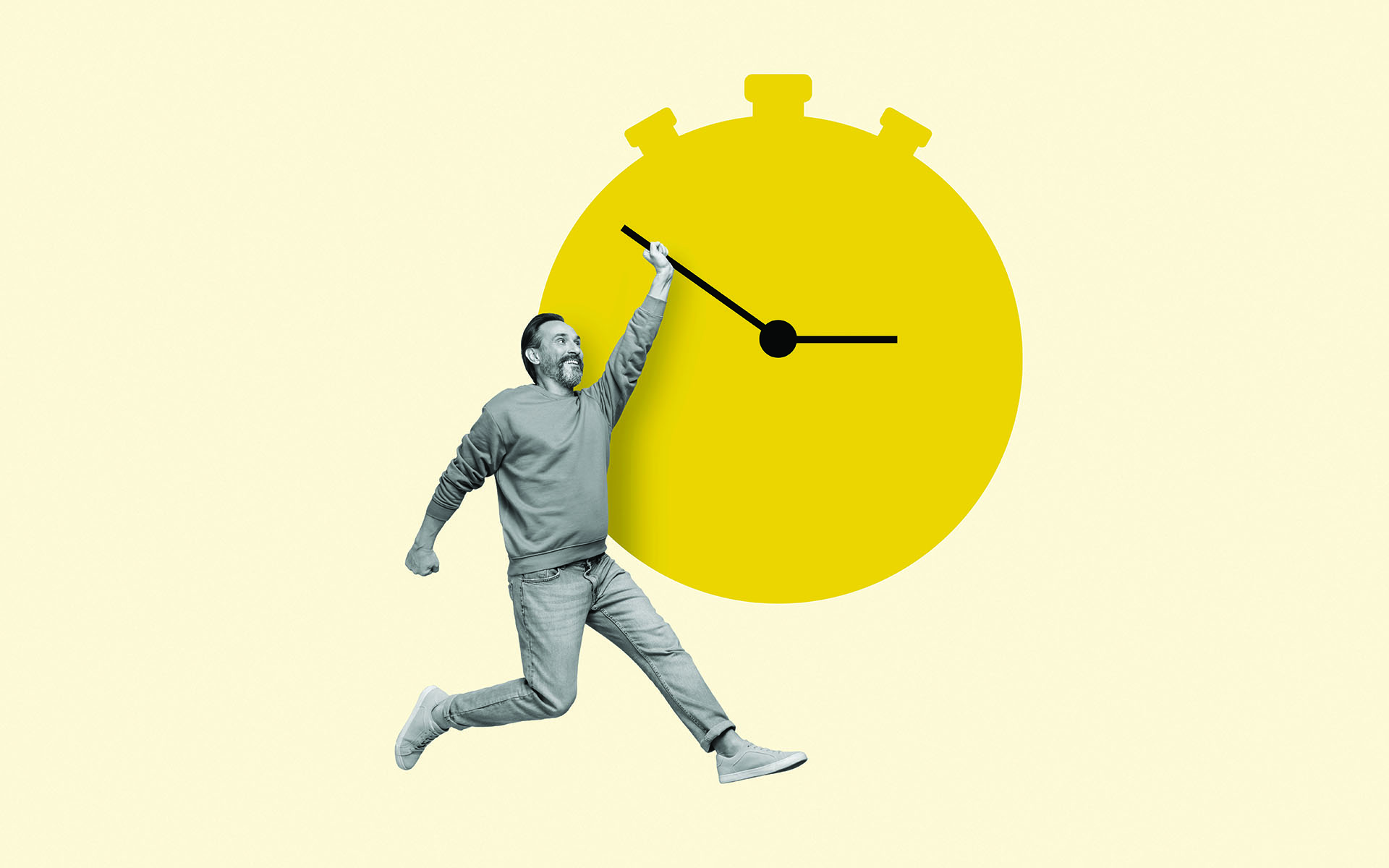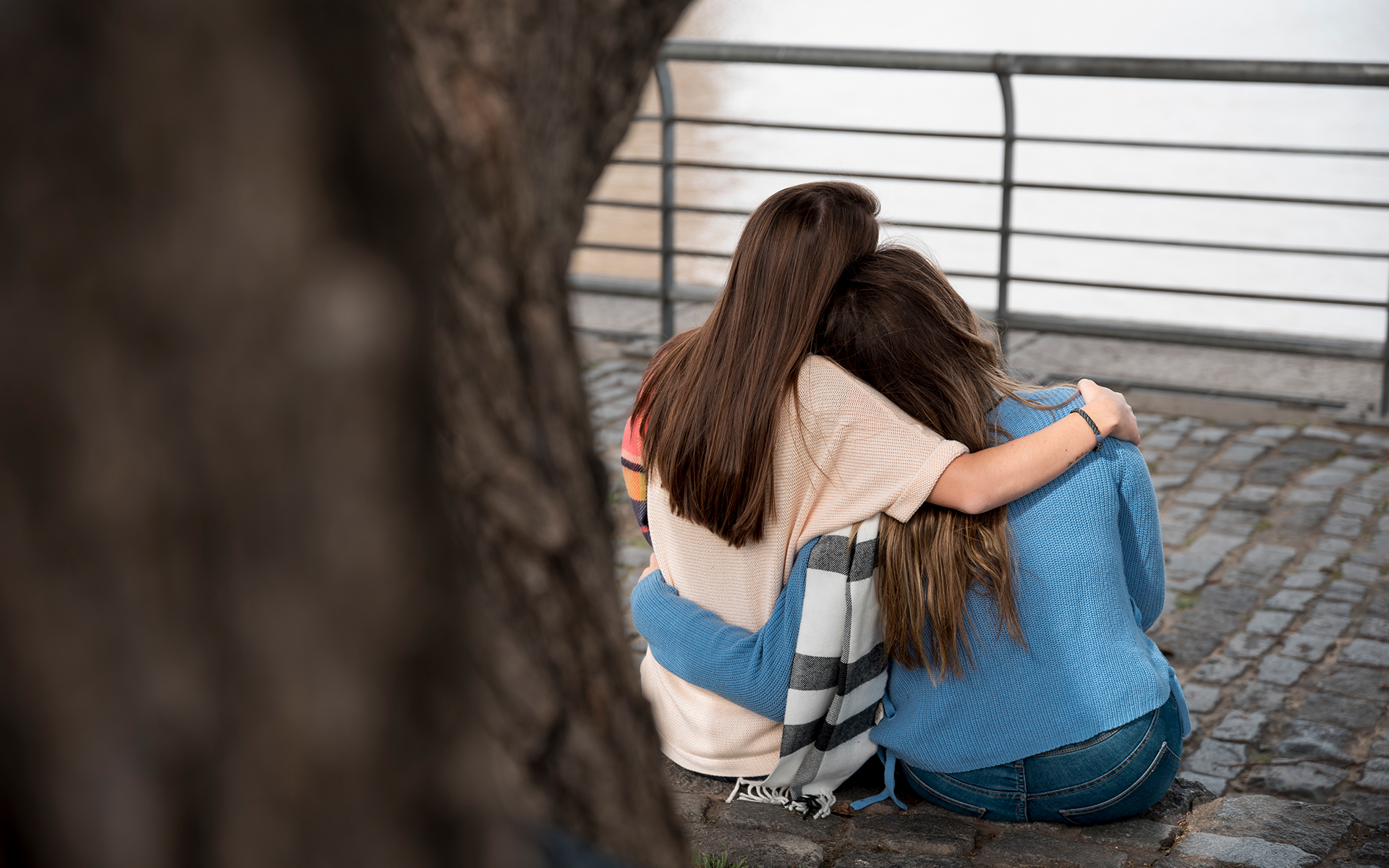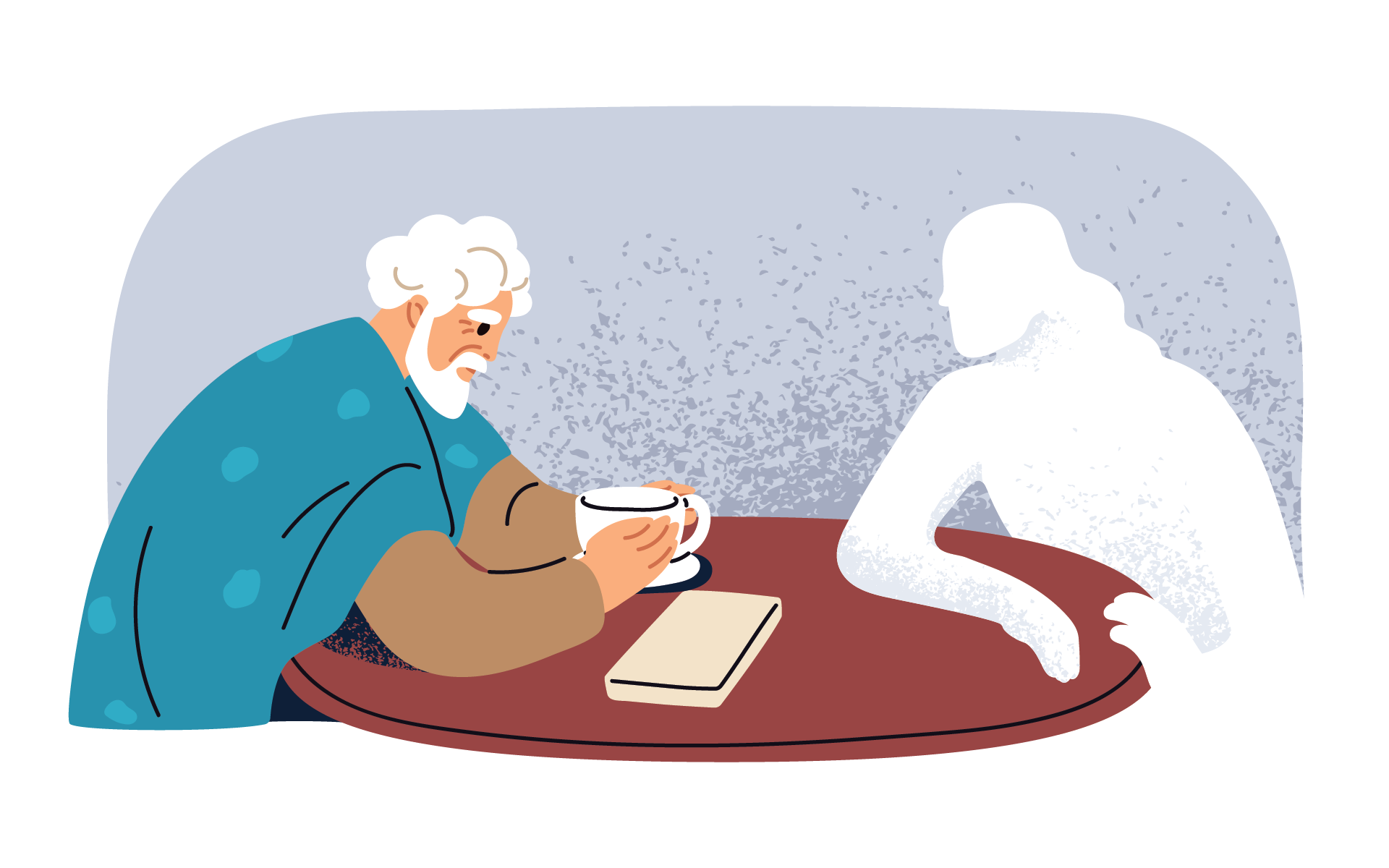Have you ever pruned or cut back a tree or a plant, then been shocked at how barren it looks? Only to then watch with amazement as each branch explodes with new life? I used to be reluctant to cut back any plant until someone told me that it is actually good for plants.
It goes against everything that we think is “healthy.” How could inflicting such trauma and stress help plants grow and, yes, even thrive? This is just a simple example of nature’s fight for survival. When we prune the plant or tree, it then puts even greater energy into growing more. Having been hacked to pieces, plants and trees could decide to give in, to just shrivel up and die. But they don’t. The same is true for us. When things get tough, we can choose: to give in or to give more, to get bitter or to get better. We can choose to mirror nature and face our problems rather than run from them. We can choose to meet the stressors we are facing and use them to help us expand our capacity for resilience, and perhaps even thrive as a result.
One morning, during a particularly difficult time in my life, I was lying on the floor, scared about the future, and I thought about the blessings of this challenge. I thought about the line in Mary Oliver’s poem “The Uses of Sorrow”: “Someone I loved once gave me a box full of darkness. It took me years to understand that this too, was a gift.” At that time, in my box full of darkness were the fossilized remains of a failed marriage, but I also had my son. My physical body was failing me, but it was also asking me to take note and remember to appreciate my health. My mental condition was frightening me, but it also presented an opportunity for me to step into courage. My life had been dictated for so long by other people and forces—my parents, my husband, my religion, societal norms—and now I was free to make my own decisions. This was my reckoning to choose, and I was consciously going to lean in to it. I knew that change is one of the only certain things in our lives, and so I had that choice to make. I wanted to get better, and I knew that required me to give more.
I wanted to try and accept this box of darkness and see it as a positive thing, a gift, as much as possible. What got me through this turbulent time was writing my own self-care list.

Why Self-Care Feels Selfish
Self-care means we commit to taking an active role in safeguarding our mental and physical wellness, proactively and (especially) in times of duress.
By definition, self-care means doing what is good for us—increasing our emotional and physical stamina, improving our self-esteem, and building resilience. Maintaining good self-care ensures that we stay compassionate, impassioned, and engaged. It means doing important work in one area without sacrificing other parts of our life. It means maintaining a positive attitude in spite of personal challenges and the larger injustices in the world. Self-care activities create daily improvement in our lives and have beneficial long-term effects. That said, these activities are not always fun. Sometimes they even border on boring.
Self-care means doing what is good for us—increasing our emotional and physical stamina, improving our self-esteem, and building resilience.
We might feel guilty about self-care because it can go against what we’ve been taught, which is that to be a good friend, parent, spouse or partner, coworker, and community member we have to put others first. Self-care means putting ourselves first, and we’re often conditioned to believe this is wrong. It’s rude. It isn’t consistent with how so many inspirational leaders throughout history are portrayed, such as Gandhi, Nelson Mandela, Martin Luther King Jr., Susan B. Anthony, and Margaret Sanger. We admire these individuals because they endured suffering and hardship, while practicing self-sacrifice. Proper nutrition, healthy relationships, and exercise are secondary, if not frivolous. They didn’t have time for yoga!
Two problems contribute to a negative view of self-care. The first is what I mention above, that self-care is often considered self-centered. It can imply caring that extends only to ourselves as individuals. But we can expand our definition of self to extend beyond the individual and include our family, community, the natural world, and
all sentient beings. Self-care actually means caring for the entire community of which we are a part; it encompasses and protects this larger order. Self-care is not about being virtuous. In a way, it means living and working in ways that are consistent with and model how we want the world to work.
Additionally, the concept of self-care has been hijacked by corporations to create a profitable industrial wellness complex, one that focuses on beauty, happiness, and comfort in the name of self-love and self-compassion. In Western society, this is mostly geared toward white women of means, but it can include anyone. The main goal of this industry is to sell goods and services that provide only a superficial appearance of self-care, one that is often, in fact, indulgent and frivolous precisely because it’s a temporary quick fix that only aims to make the individual feel better about themselves.
We can expand our definition of self to extend beyond the individual and include our family, community, the natural world, and all sentient beings.
The reality is that authentic self-care is unsexy, hard work—which isn’t an attractive marketing pitch for corporations or brands. The way the term is broadly used today has very little to do with the healthy choices that reflect true self-love and self-compassion. It certainly has nothing to do with the struggle to survive in the face of political and structural oppression. For communities that are under attack by their own government, and for individuals with little access to health care, fresh food, clean water, and safe housing, self-care is a radical act of self-preservation.

What is Authentic Self-Care?
Authentic self-care is for everyone. It’s what we all need and deserve, but it can be hard because it’s not a quick fix. Ironically, neither is our own inner journey, or something as lofty as social justice work. Seen this way, wellness
is one aspect of social justice, and like social justice, wellness doesn’t happen overnight.
This is another reason that self-care has gotten such a bad name: It is much easier to practice “self-care” in easy ways that feel good right now than it is to develop the discipline of a healthy lifestyle that often sucks in the moment but feels really great later. Authentic self-care is not self-indulgence. Self-indulgence is unrestrained gratification of our desires and whims, behaviors meant only to alter our mood and provide a m temporary escape from pain and grief
How can we tell the difference between self-indulgence and true acts of self-care? First, ask if what you’re doing is a temporary quick fix or something that is meant to yield long-term benefits. Sometimes, self-care is best expressed by setting limits in ways that prioritize what’s most important. This takes discipline. Some everyday examples might include watching only one episode of a TV show, not bingeing a whole season, so you get to bed at a decent hour and experience a full night’s rest. It might be not having a glass of wine with dinner, or only having one; saying no when you don’t want to do some- thing; or waking up early so you have extra time to meditate, journal, or exercise before work.
The morning when I wrote my own self-care list, which was my response to true despair and a will to survive, I felt an instinctual inner knowing that I had to give up most of my vices in order to truly dedicate myself to self-care, to my healing, and to my overall wellness. If the work we do in the world is larger than ourselves—and for me at that moment being a mother to my son was just that—then self- care means defining clear boundaries that help ensure our long-term physical, mental, and spiritual health. But I didn’t give up all my vices. I knew there were healthy indulgences I could still enjoy, ones that provided important moments of joy and happiness. For me, these were defined by even the smallest of actions that helped me restore balance during one of the most imbalanced periods in my life. This included things like spending an evening reading a good book with a mud mask on my face, shutting down my phone and not respond- ing to texts or emails for a few hours of solitude, and having a meal with a friend while engaging in meaningful conversation. I didn’t consider any of these things frivolous.
My point is this: Self-care is not one-size-fits-all. We each must decide what’s right for ourselves. The biggest challenge I needed to overcome was the guilt and ingrained belief that taking any time for myself was selfish. In the end, what I learned from this experience is that tending to myself is a way to reaffirm that I value myself, and because I do, I must also honor myself. Taking that time to reaffirm in writing that “I am not broken” set me on my path and positioned me front and center as my own cheer- leader and self-advocate. Yet I can also proclaim irrefutably that authentic self-care is a truly selfless act—one that made me into a healthier being, a more engaged mother, and eventually, an impassioned self-care activist.

What Does a Sustainable Self-Care Regimen Look Like?
It doesn’t look like a list of New Year’s resolutions. Most of those never get kept. Just because I wrote down a list of things that I knew should be the cornerstone of my “self-care plan” didn’t mean I suddenly enacted everything without fail from then on. I failed miserably, in fact. Following through was incredibly difficult. There were days I didn’t seek support or get exercise; days when I ate and drank things I knew would increase my inflammation. I didn’t always create healthy boundaries with others. Oftentimes I took on more than I should have. My lingering guilt over being a single mom and my need to please people in order to amplify my self-worth didn’t vanish. Eventually, though, by not beating myself up for these infractions and by giving myself permission to begin anew each day—coupled with putting in place the most critical component of all, a community of care—I was able to develop a self-care rhythm.
Through this trial and error, I learned that, to be sustainable, a self-care plan needs to be gentle enough to work. It has to be incremental and composed of a lot of little things. Self-care might start as a set of promises we make to ourselves, but to enact them, we need to find a rhythm we can live with. Like a musical rhythm, a self-care rhythm is a regular, repeated pattern of actions that helps maintain the song of our life. That is, this rhythm is integrated into and supports whatever we are already doing on a daily basis. It’s not a disruption. Rather, it enhances our life.
There are actually four self-care rhythms we can focus on: daily, weekly, seasonally, and annually. Getting into a new self-care groove wasn’t easy at first. Like most people, I have a hard time creating and maintaining a balance between work, social life, family, and other obligations. Every evening and on the weekends, I would take my work home with me, whether it was task-related work (such as paperwork or answering emails) or emotional work (bearing the burdens of my community or clients). Of course, I couldn’t entirely stop bringing work home at times (who can?), but I needed to establish a more formal separation between work and my personal space.
One of the ways that helped me create a better work-life balance was to identify the mudrooms in my life, so to speak. Just like a home’s entryway, I developed formal transition rituals or practices that allowed me to shift from my public self to my personal self. Over time, these micro-practices became healthy habits that contributed to my overall self-care. For example, on my commute home, I practiced mindful driving in silence instead of taking phone calls or listening to talk radio.
As soon as I got home from work, I took a walk around the block—with the dog and with- out my phone! After arriving somewhere, I sat in my parked car for a few moments and took the time to do a quick breathing exercise, then set an intention before rushing into the house or into my son’s preschool. These seemingly small things allowed me to let go of the stressors from work and to show up more fully present in the other areas of my life. Like a mudroom, they helped me wash off the proverbial mud from my shoes, so I could move into the next activity without tracking emotional dirt from my previous activity. These became integral parts of my daily self-care practice.
To achieve a weekly rhythm, I wanted to balance my activities between four different areas that I identified: work, family and relationships, “me time,” and my cultural traditions. Every week, I tried to be conscious about making sure that each of these areas was getting enough of my time and that they were balanced in ways that provided me energy and nourishment. Then, I looked at longer stretches of time and considered each season and each year and asked: Was I providing for all my needs on a regular, ongoing basis? This took careful scrutiny and constant adjustment. Not every day, week, season, or year is the same, and I never found a perfect balance or formula that worked all the time.

Making Room for Sustainable Self-Care
Consider the rhythms of your daily life—what would qualify as your mudrooms? What physical spaces or natural pauses already exist that would allow you to transition more elegantly from one demand or obligation to another? What about the weekly balance of your activities? Are some areas of your life being overrun or overwhelmed by others? You are the architect of your life, so consider your whole house and how to change things so that you can function at your best.
As you do this, one thing you might realize is that your home might be nice and fulfilling to live in if it wasn’t so full of clutter, if it wasn’t in such disarray. Every home has a junk drawer or two, along with a hallway closet or room where we shove things when guests come over to hide our clutter. We may fool our guests, but the clutter remains once they leave, and it inevitably spills over and grows. Mudrooms are like magnets for clutter—full of carelessly strewn shoes and boots, rain jackets and winter coats, single gloves without a matching pair, duffel bags filled with equipment and uniforms, and even bags of new but unused items that, despite our good intentions, are still waiting to be returned to the store even after months and months. The problem with this chaotic scene is that the mayhem eventually becomes an obstacle, a literal physical boundary preventing us from entering or exiting our home. Before leaving the house, we waste time pawing through this minefield looking for the “other” shoe or that matching glove. What can undo this madness? A team effort, of course. We need to take a community approach to the common cause of self-care.
Despite my efforts and best-laid plans—writing down and chunking my self-care activities, focusing on mudrooms and building smaller habits—I still consistently fell short of my goals. I couldn’t adhere to my self-care plan because I was constantly tripping over my own clutter.

Creating a Community of Care
Eventually, all the women in my life who had become my support system were the ones who helped me get this mess in order. These women were friends who became sisters; some were only acquaintances when I was married but became my safety net once I was a single mom. Ultimately, this group of individuals became my formal “community of care,” and they were exactly what I needed in order to fulfill my obligations to myself.
My friend Helen helped me realize this epiphany one day as I was venting to her about how I had no time or energy left at the end of every night to take care of even one thing on the list. She asked me a simple, direct question: “What do you need right now in order to get one thing done?” That question stopped me in my tracks because I couldn’t remember the last time anybody had asked me what I needed. Helen, a savvy and sharp business executive and fellow mom whom I had befriended through our sons’ after-school karate classes, cut through my dumbstruck silence and asked again: “What do you need right now to get to one thing on your list on a regular basis? Be specific.”
“I need more time in the mornings. I need someone to take Liam to school some mornings. That would give me time to do yoga, exercise, journal, or even meal plan,” I responded.
“Great. That’s perfect.” Helen sprang into action, as she normally did. She told me not to worry, that she was “handling” things, and within hours, she had arranged for a school-morning carpool plan with her, her next door neighbor, and me. Suddenly, after loading Liam into the car with his backpack and lunch box, I had close to a full hour available to me twice a week. For a single mom with chronic health issues, this was a huge gift. Years later, I was able to return the favor and do the same for another single mom.
After this intervention from Helen, I spent one of my treasured hours reflecting on my self-care list again. I rewrote the list, dedicating a single page to each self-care category. I created three columns on each page; in one column I listed each activity in that category, and in the second column I wrote down obstacles. I identified each shoe and piece of clutter in my mudrooms. I asked what was getting in the way of partaking in each activity, writing down things like time, finances, and skills. Then, in the third column, I strategized ways to remove these barriers, listing things either I could do or someone else might do for me.
Three key things emerged for me during this process: First, I realized that I needed the support of a friend or community to be able to remove many of these obstacles. Second, I understood that there were self-care items where I was, in fact, the only obstacle, since they involved issues like motivation, discipline, and self-esteem, to name a few. For these, by taking a realistic look at myself, I realized that I needed someone to hold me accountable when I would not hold myself accountable. Lastly, I realized that some of the items on my list were too ambitious and unrealistic for where I was, and I gave myself permission to remove those items or to leave my plan open for adjustment over time. My self-care plan was not written in stone. It was a living, breathing document that would change over time, as my life and demands changed. It was a document that depended on the support of an entire community.
Not only that, I soon helped everyone in that community formulate their own self-care plans. In time, we would weave together a mutually beneficial safety net of care and support that ensured we could all obtain what we needed, ask for help without guilt, remove obstacles from our path of self-preservation, and hold one another accountable with love and with kind sight. Ultimately, consistently showing up for ourselves lays the foundation for our life’s purpose: showing up for others.
Adapted from the book Sit Down to Rise Up: How Radical Self-Care Can Change the World. Copyright ©2021 by Shelly Tygielski. Printed with permission from New World Library—www.newworldlibrary.com
READ MORE
Why You Need a Self-Care Plan
Shelly Tygielski offers a three-step exercise to help you get started with your own self-care plan—no bubble bath required.
Read More
Get Real About Self-Care
Mindful editor-in-chief Heather Hurlock gets real about the challenges—and importance—of making space to give yourself what you need.
Read More
Summer Meditation Retreat: 6 Mindfulness Practices for Self-Care
It’s time to slow down, be present, and appreciate the world around you. Explore these tips and practices from Barry Boyce, Sharon Salzberg, Sebene Selassie, and Jessica Morey that will help you get started.
Read More
The Six Seconds in Between: Finding Time for Radical Self-Care in an Overscheduled World
Mindfulness is an indispensable leadership skill that takes moments to practice, and it can shift the paradigm of our working culture.
Read More







